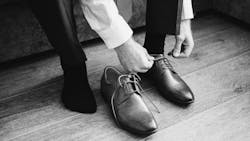Returning to work after COVID-19: Protocol for symptomatic and asymptomatic health-care professionals
Have you tested positive for COVID-19 (SARS-CoV-2), or do you suspect you may have symptoms of the virus? As a health-care professional, knowing how and when you can resume practicing dentistry is critical to the health and safety of your patients and team. Following the proper protocol can help protect others you may come into contact with at work from possible infection.
The Centers for Disease Control and Prevention (CDC) offers up-to-date guidelines about what to do if you suspect you have COVID-19 or have conclusively tested positive for the virus—whether or not you exhibit outward symptoms. Before returning to work, make sure you meet the following specifications1:
- Wait at least three days after fever resolves (without the use of fever-reducing medications).
- Make sure your respiratory symptoms have improved.
- Wait at least 10 days after your viral symptoms first appeared.
- Test negative for SARS-CoV-2 RNA from at least two consecutive specimens 24 hours apart using an FDA Emergency Use Authorized COVID-19 molecular assay.i
For further information about testing, see the CDC’s Interim Guidelines for Collecting, Handling, and Testing Clinical Specimens for COVID-19.2 Guidelines will be updated as new information becomes available.
Are there protocols for handling situations in which dental team members and patients test positive for COVID-19? Yes. It is absolutely critical for all dental professionals to utilize infection control strategies and proper use of PPE to protect themselves, their patients, and their staff members. Here are some helpful resources regarding COVID-19 from the American Dental Association:
- What to do if someone on your staff tests positive for COVID-193
- Steps to take if a patient reports COVID-19 exposure after treatment4
Editor's note: For more information, visit the DentistryIQ COVID-19 Resource Center.
References
- Criteria for return to work for healthcare personnel with suspected or confirmed COVID-19 (interim guidance). Centers for Disease Control and Prevention. National Center for Immunization and Respiratory Diseases (NCIRD). Division of Viral Diseases. Updated May 2, 2020. https://www.cdc.gov/coronavirus/2019-ncov/hcp/return-to-work.html
- Interim guidelines for collecting, handling, and testing clinical specimens for COVID-19. Centers for Disease and Prevention. National Center for Immunization and Respiratory Diseases (NCIRD). Division of Viral Diseases. Updated May 22, 2020. https://www.cdc.gov/coronavirus/2019-ncov/lab/guidelines-clinical-specimens.html
- What to do if someone on your staff tests positive for COVID-19. ADA Center for Professional Success. American Dental Association. Updated May 29, 2020. https://success.ada.org/~/media/CPS/Files/COVID/A_Positive_COVID-19_Test_Result_On_Your_Staff.pdf
- Steps to take if a patient reports COVID-19 exposure after treatment. ADA Center for Professional Success. American Dental Association. Updated May 29, 2020. https://success.ada.org/~/media/CPS/Files/COVID/Patient_Reports_COVID-19_Post_Treatment.pdf
Notes
i. All test results should be final before isolation is ended. Testing guidance is based upon limited information and is subject to change as more information becomes available. In persons with a persistent productive cough, SARS-CoV-2-RNA might be detected for longer periods in sputum specimens than in upper respiratory tract specimens. Source: Centers for Disease Control and Prevention

